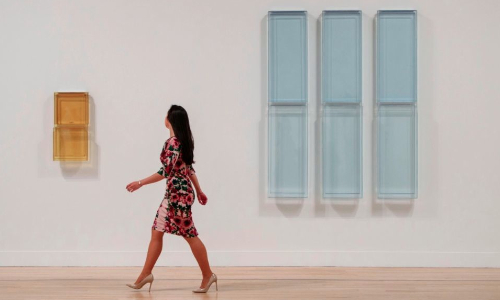Review: Rachel Whiteread

If we could all find someone to look at us the way Rachel Whiteread looks at an empty loo roll, the world would be a happier place. Few artists find quiet beauty in everyday things like she does.
While her contemporaries like Damien Hirst and Tracey Emin were creating sculptures filled with live flies or displaying beds covered in puke, Whiteread was making pastel-coloured moulds of hot water-bottles, and resin casts of chairs lined up like giant fruit gums.
Whiteread is a pillar of the British art world, having climbed virtually every summit; she’s won the Turner Prize (in 1993), exhibited on the fourth plinth (an inverse cast of the plinth, in clear resin), filled the Tate Modern’s Turbine Hall (with casts of cardboard boxes). And, in a neat reflection of her art, she’s done it quietly and meticulously, always hovering at the threshold of becoming a household name.
This excellent exhibition collects works both large and small in a vast, single room. There are no lengthy introductions, few captions and even fewer titles (“Untitled” is the title du jour). What’s left are dozens upon dozens of casts exploring the theme that’s fascinated her throughout her 30-year career: the nature of things. All kinds of things. Mattresses. Windows. Stairs. Entire buildings. Her work searches for new ways of seeing the objects we see but don’t see.
Sometimes the results are a pleasant punchline – like the loo rolls – while others are more transformative. Her casts of the backs of bookshelves, for instance, used in her Judenplatz Holocaust Memorial in Vienna, are mesmerising, with strange, subtle patterns formed by pages pressed into plaster. Her staircases, meanwhile, have an Escher-like quality, snaking upwards at impossible angles, useless and beautiful.
There’s a real tactility to this exhibition – you want to reach out and touch the plaster windows, walk on the resin floorboards, feel the warmth of the hot water bottles. In a world of loud contemporary art, this is a wonderful, essential change of pace and tone.
First published in City A.M.

